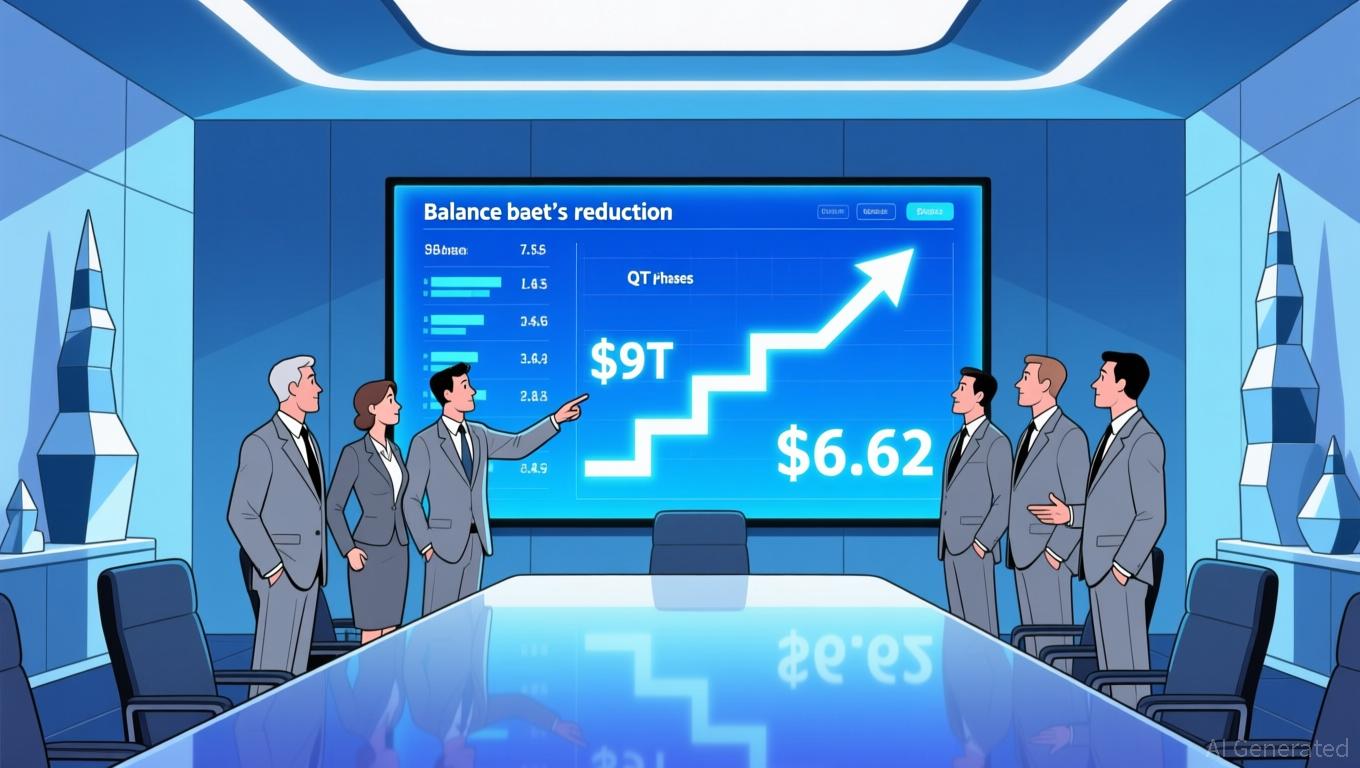Ethereum’s Fusaka Update: Advancing Scalability for a Rollup-Driven Tomorrow
- Ethereum's 2025 Fusaka upgrade introduces PeerDAS (EIP-7594) to boost scalability by reducing L2 transaction costs through partial blob data verification. - The upgrade aims to increase blob capacity from 6-9 to 48 per block without compromising decentralization, benefiting L2 platforms like Arbitrum and Optimism. - PeerDAS enables statistical sampling of blob data, lowering bandwidth demands while addressing L2 economic bottlenecks and potentially driving dApp adoption. - Testing phases (Devnet-3 to Dev

The Fusaka upgrade for Ethereum, anticipated for release in late 2025, is designed to boost scalability and lower Layer 2 (L2) transaction expenses by introducing PeerDAS (Peer Data Availability Sampling), which is central to
This upgrade is set to benefit L2 solutions like
The timeline for Fusaka depends on successful testing. Developers have recently finished non-finality testing on Fusaka Devnet-3 and are moving forward to Devnet-5, which will focus on improving blob data management and validator performance title3 [ 3 ]. Although the upgrade is planned for November or December 2025, past delays in Ethereum’s upgrade history remain a concern. For example, the Pectra upgrade faced several postponements after initial setbacks in 2024 title1 [ 1 ]. Despite these obstacles, the Ethereum community is cautiously optimistic, with Christine Kim from Galaxy emphasizing that the structured testing process favors stability over speed title3 [ 3 ].
Fusaka’s impact goes beyond technical enhancements. By improving data availability and lowering L2 expenses, the upgrade could bolster Ethereum’s standing against rival smart contract platforms and encourage broader adoption of decentralized applications (dApps), DeFi services, and NFT markets title3 [ 3 ]. Experts also believe that increased throughput and reduced fees may attract more developers to build on Ethereum, reinforcing its position as the settlement layer in a rollup-focused ecosystem title6 [ 6 ]. Institutional validators, in particular, could see operational costs drop, potentially drawing new participants to the network title1 [ 1 ].
Nevertheless, integrating PeerDAS brings new challenges. For instance, block proposers must apply erasure coding to blobs and create cryptographic proofs within strict timeframes, which could raise hardware demands for individual stakers. Moreover, since the system relies on distributed data sampling, the network’s security hinges on having enough active nodes—a risk Ethereum’s developers are addressing with incentive strategies title6 [ 6 ]. Even with these hurdles, the Ethereum Foundation and core development team remain dedicated to ongoing testing and refinement, aiming to ensure the upgrade supports the network’s long-term scalability objectives.
Disclaimer: The content of this article solely reflects the author's opinion and does not represent the platform in any capacity. This article is not intended to serve as a reference for making investment decisions.
You may also like
Fed Halts QT, Crypto Balances Hopes for Rate Cuts Amid Regulatory Challenges
- The Fed ended its QT program on December 1, halting balance sheet reductions to support inflation targets and employment goals. - Crypto markets face mixed signals: reduced QT may ease rate pressures but Bitcoin ETFs saw $523M outflows as rate cut odds dimmed. - Clapp Finance launched multi-collateral crypto credit lines to address liquidity needs amid volatile markets and CeFi lending growth. - Bullish reported $18.5M Q3 net income but its stock fell 40% since August, reflecting broader crypto market un

Bitcoin Updates Today: Bitcoin’s Downward Trend Teeters Amid Potential for a Short Squeeze
- Bitcoin perpetual futures show 52.5% short dominance, signaling institutional caution amid mixed exchange positioning. - Binance leads with 52.94% shorts, while Gate.io's 50.45% ratio reflects a more balanced risk appetite across platforms. - Backwardation and $450M ETF outflows highlight market stress, historically preceding 45% average rebounds after capitulation phases. - Short squeeze risks and potential $85k price targets underscore the fragile equilibrium between bearish sentiment and reversal cata

Zerohash Amidst Crypto’s Ultimate Turmoil
- Zerohash faces liquidity and reputational risks amid crypto market turmoil, driven by unconfirmed survey claims and sector-wide volatility. - A $168M liquidation event on GMX highlights systemic risks from high-leverage trading, echoing prior $100M losses by trader James Wynn. - Regulatory uncertainty intensifies with U.S. stablecoin projections, EU MiCAR compliance shifts, and Trump-era pardons complicating compliance frameworks. - Institutional investors pivot to yield-bearing stablecoins (e.g., 15% AP

Brazil Suggests Taxing Stablecoins to Address $30 Billion Shortfall and Meet International Norms
- Brazil plans to tax stablecoin transactions via expanded IOF to align with global standards and recover $30B in lost revenue. - Stablecoin transfers (e.g., USDT) will be reclassified as forex operations under 2025 central bank rules, subjecting them to IOF tax. - The move aligns with OECD's CARF framework, enabling international crypto data sharing and joining global efforts to combat tax evasion. - Political debates persist over crypto tax exemptions, while regulators aim to curb money laundering and in
